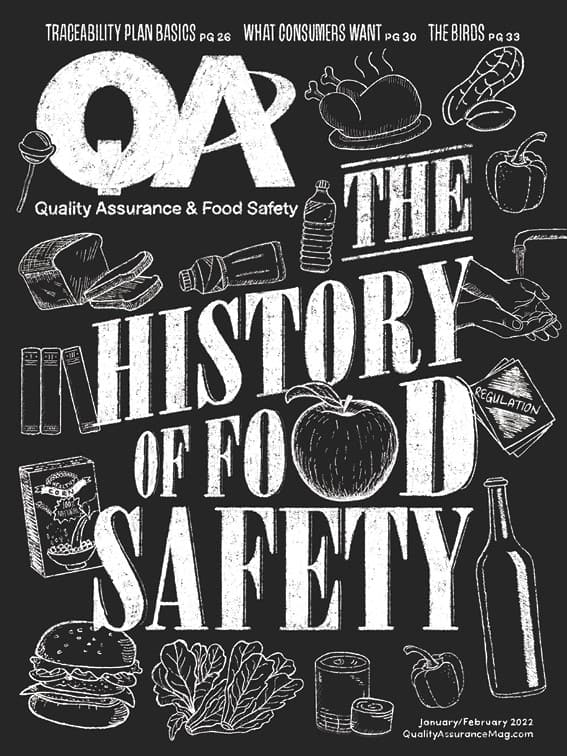
Does your company need to worry about regulations relating to foods designed for infants (considered to be anyone aged 0-12 months)? If you manufacture infant formula, then, of course, the answer is yes. But what if you manufacture baby food? Those cute little jars of liquified goodness? Traditionally, those types of food haven’t been subject to any special Food and Drug Administration (FDA) regulations. Manufacturers simply need to follow the regulations that govern all foods designed for consumption by humans of any age.
That, however, is changing.
That’s because there is a growing push to limit, and ultimately eliminate, heavy metals present in baby food: inorganic arsenic, lead, cadmium and mercury. These elements are present in our food chain in amounts that are concerning to the U.S. Congress and other stakeholders because of modern manufacturing techniques, and they have an outsized effect on infant health.
On March 25, 2021, the Baby Food Safety Act was introduced in Congress. As of publishing, it has not yet passed. But it if does, it would require manufacturers, within one year of its enactment, to reduce levels of inorganic arsenic in non-cereal foods to 10 parts per billion and in cereals to 15 ppb; levels of cadmium and lead to 5 ppb in non-cereals and 10 ppb in cereals; and levels of mercury to 2 ppb.
Within three years of enactment, the act requires that final regulatory levels be set that reduce levels to an even lower amount, with those levels being reevaluated every five years thereafter.
But the act would do much more than simply setting limits for heavy metals. It would also add regulations to the Food, Drug and Cosmetics Act requiring FDA to specifically regulate foods for consumers up to 36 months old; it would require manufacturers to report levels of heavy metals biannually on their websites; it would give FDA mandatory recall authority; and it would create public awareness campaigns and offer grants for farming research.
FDA itself is also beginning to act to address heavy metals in the foods consumed by the nation’s tiniest consumers. In early 2021, FDA launched an action plan to address this very issue, called Closer to Zero. On Oct. 8, 2021, FDA announced its first public meeting under the plan, held Nov. 18, 2021. The overarching purpose of the plan is to gather data about heavy metal levels and then set tolerances for those substances, with the input of all stakeholders.
Thus, the FDA has signaled its intent to act regardless of what Congress has in store. And in August 2020, the FDA finalized certain guidance setting the limit for inorganic arsenic in baby rice cereals to 1 ppb/100 micrograms per kilogram. Fortunately, most manufacturers had already achieved those limits; sampling from 2018 showed that 76% of manufacturers were in compliance, up from 47% in 2014 and from just 36% between 2011 and 2013.
Whatever the ultimate outcome of these initial steps taken by Congress and FDA, one thing is clear: Concerns about heavy metals in the foods consumed by our tiniest citizens isn’t going away. So even if you don’t think you manufacture baby food, it’s past time to begin working to address the issue in your facilities and your fields if the product you manufacture or grow may be destined for a jar of baby food.

Explore the January February 2022 Issue
Check out more from this issue and find your next story to read.
Latest from Quality Assurance & Food Safety
- Scentian Bio Wins Top Prize at IFT FIRST Startup Pitch Competition
- Evigence Debuts FreshSense to Change How Food Industry Measures Freshness
- Acme Releases Automated Scraper Strainer
- Mitzi Baum to Step Down as CEO of Stop Foodborne Illness
- USDA ARS Scientists Develop Pectin That Gels with Low-Sugar Products
- GS1 US Celebrates 50-Year Barcode 'Scanniversary' and Heralds Next-Generation Barcode to Support Modern Commerce
- New Florida Extension Agent Will Teach Stakeholders About Food Safety
- Athletic Brewing Company Announces $50 Million Equity Financing Round Led by General Atlantic





